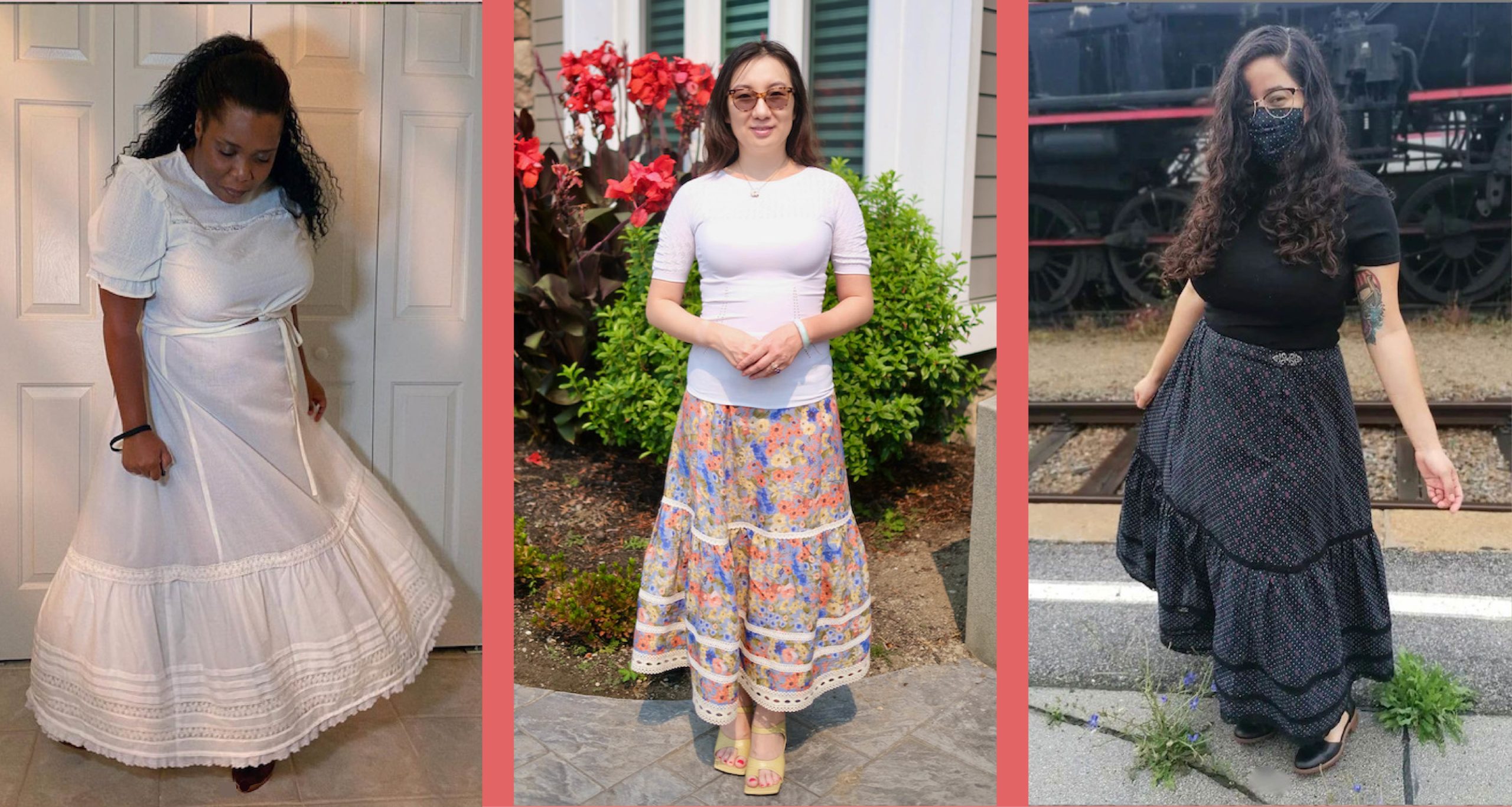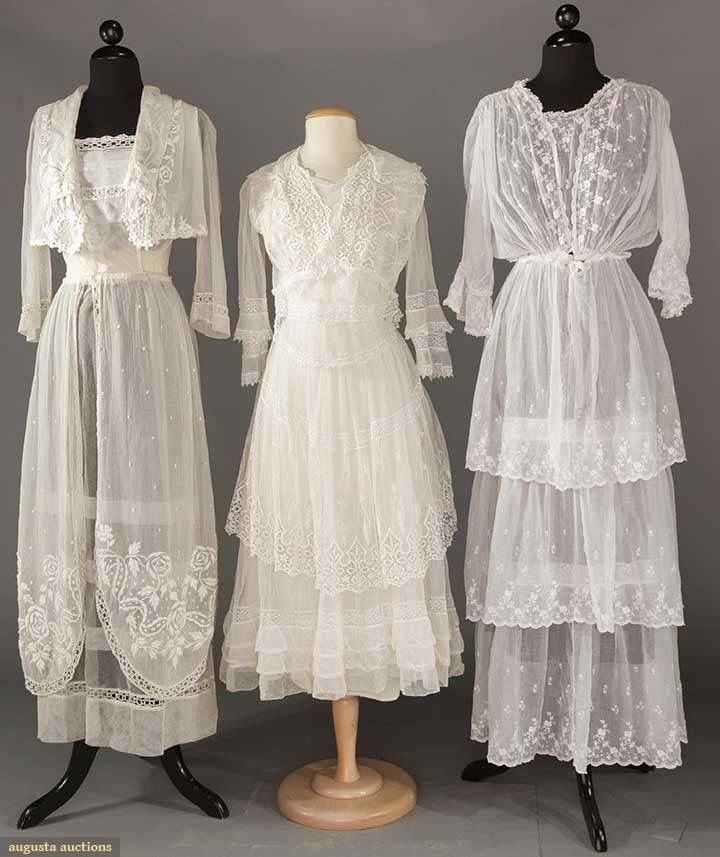Voile, lawn, muslin. What’s the difference (the short answer)
A Note: this post is a refresh and an update of a post that was originally written in 2010 In response to my post on the history of muslin, the Baroness von Vintage has asked what the difference between voile, lawn and muslin is. The problem with defining fabrics is that fabrics are an art, not a science. You can clearly define the chemical makeup on anything, but strictly breaking all art into particular periods or definitions? Not as easy. Especially since definitions have varied throughout history, and vary across countries today. I’ll try though. All three are lightweight fabrics, with some element of sheerness. Today they are usually made of cotton, but you also fine them in linen. Basically, if it has an open weave, it is muslin (except in the US, where muslin is a cheap, plain fabric, and muslin gauze is an open weave). This weave is also called mull or book muslin. It’s just a little tighter and smoother than cheesecloth. If it is very tightly woven with fine, glossy …


